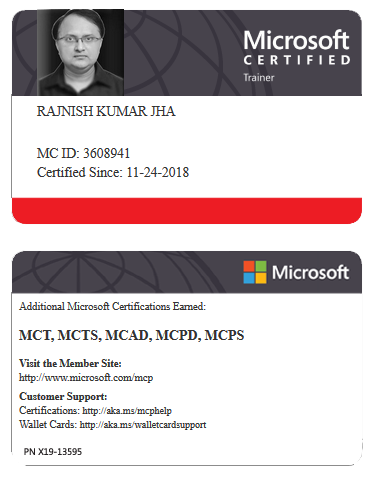Learning how Testing mechanism works in Azure DevOps
This strategy integrates various test types and emphasizes key considerations for a robust, efficient, and automated testing pipeline in Azure DevOps.
1. Test Types
1.1 Unit Testing
Objective: Validate the smallest components or functions in isolation.
When: During the build phase.
Tools: MSTest, xUnit, NUnit (for .NET), JUnit (for Java), Pytest (for Python).
Pipeline Integration:
xxxxxxxxxx21scriptdotnet test --collect"Code Coverage"2 displayName"Run Unit Tests"1.2 Integration Testing
Objective: Ensure components work together as intended.
When: Post-build, pre-deployment.
Tools: Postman, SoapUI, Pytest.
Pipeline Integration:
xxxxxxxxxx21scriptdotnet test ./tests/IntegrationTests/2 displayName"Run Integration Tests"1.3 Functional Testing
Objective: Verify the system meets business requirements.
When: After deployment to a test environment.
Tools: Selenium, Playwright, Cypress.
Pipeline Integration:
xxxxxxxxxx21script./run-functional-tests.sh2 displayName"Run Functional Tests"1.4 Smoke Testing
Objective: Verify basic functionality before further testing.
When: After each deployment.
Tools: Selenium, custom scripts.
Pipeline Integration:
xxxxxxxxxx21script./run-smoke-tests.sh2 displayName"Run Smoke Tests"1.5 Load Testing
Objective: Assess system behavior under expected loads.
When: Before production deployment.
Tools: JMeter, k6.
Pipeline Integration:
xxxxxxxxxx21scriptk6 run load-tests.js2 displayName"Run Load Tests"1.6 UI Testing
Objective: Validate the user interface and workflows.
When: After functional testing.
Tools: Selenium, Playwright, TestCafe.
Pipeline Integration:
xxxxxxxxxx21scriptnpx playwright test2 displayName"Run UI Tests"1.7 Stress Testing
Objective: Test system under extreme conditions.
When: During staging or performance testing phases.
Tools: Apache JMeter, Locust.
Pipeline Integration:
xxxxxxxxxx21scriptjmeter -n -t stress-tests.jmx2 displayName"Run Stress Tests"1.8 Performance Testing
Objective: Measure system performance metrics (latency, throughput).
When: After load testing.
Tools: k6, Apache JMeter.
Pipeline Integration:
xxxxxxxxxx21script./run-performance-tests.sh2 displayName"Run Performance Tests"1.9 Chaos Testing
Objective: Test system resilience by introducing failures.
When: Post-deployment in staging or production.
Tools: Chaos Monkey, Gremlin.
Pipeline Integration:
xxxxxxxxxx21scriptgremlin attack create2 displayName"Run Chaos Testing"1.10 Penetration Testing
Objective: Identify vulnerabilities via ethical hacking techniques.
When: Before production deployment.
Tools: OWASP ZAP, Burp Suite.
Pipeline Integration:
xxxxxxxxxx21scriptzap-cli scan http//app.url2 displayName"Run Penetration Testing"1.11 Security Testing
Objective: Ensure the system is secure from threats.
When: During build and deployment phases.
Tools: Snyk, Veracode, Dependency-Check.
Pipeline Integration:
xxxxxxxxxx21taskSnyk@12 displayName"Run Security Scans"1.12 End-to-End Testing
Objective: Verify the entire system workflow.
When: After functional testing and before production.
Tools: Cypress, Selenium.
Pipeline Integration:
xxxxxxxxxx21scriptcypress run2 displayName"Run End-to-End Tests"2. Key Considerations
Assessment and Planning
Identify requirements for each test type.
Define acceptance criteria, scope, and coverage.
Prioritize tests based on risk and impact.
Tools and Frameworks Selection
Choose tools aligned with project tech stack and team expertise.
Example:
Frontend: Selenium, Cypress.
Backend: JUnit, MSTest, Postman.
Security: OWASP ZAP, Snyk.
Test Automation
Automate all repetitive and high-priority tests (unit, integration, regression).
Use test tags to categorize tests (e.g.,
Smoke,Regression,Critical).
Continuous Integration (CI)
Integrate tests into the CI pipeline to identify issues early.
Example:
xxxxxxxxxx71trigger2main3pool4 vmImage'ubuntu-latest'5steps6scriptdotnet test --collect"Code Coverage"7 displayName"Run Unit Tests"Continuous Deployment (CD)
Automate deployments to test environments for end-to-end and functional testing.
Use deployment gates for pre-production testing phases.
Monitoring and Feedback
Integrate monitoring tools (Azure Monitor, Application Insights).
Use feedback loops to refine test cases and improve pipeline efficiency.
Documentation and Training
Maintain detailed documentation for testing processes, tools, and best practices.
Conduct regular training sessions for team members.
3. Example Pipeline Integration
xxxxxxxxxx461trigger2main3pool4 vmImage'ubuntu-latest'5stages6stageBuild7 jobs8jobBuildCode9 steps10taskUseDotNet@211 inputs12 packageType'sdk'13 version'6.x'14scriptdotnet build15 displayName"Build Application"16stageTest17 dependsOnBuild18 jobs19jobUnitTests20 steps21scriptdotnet test --collect"Code Coverage"22 displayName"Run Unit Tests"23taskPublishTestResults@224 inputs25 testResultsFormat'JUnit'26 testResultsFiles'**/TestResults/.xml'27jobIntegrationTests28 steps29scriptdotnet test ./tests/IntegrationTests/30 displayName"Run Integration Tests"31jobFunctionalTests32 steps33script./run-functional-tests.sh34 displayName"Run Functional Tests"35stageDeploy36 dependsOnTest37 jobs38deploymentDeployToQA39 environment'QA'40 strategy41 runOnce42 deploy43 steps44scriptecho "Deploying to QA Environment"45script./run-end-to-end-tests.sh46 displayName"Run End-to-End Tests"





















Leave a Reply